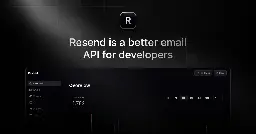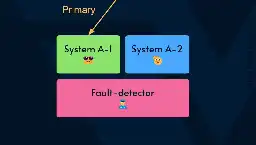
Sysadmins for sysadmins
- What are these 100.x.y.z addresses?tailscale.com What are these 100.x.y.z addresses?
Tailscale assigns each node on your network a unique 100.x.y.z address. This address stays stable for each node (a device or a server), which means it should not change, no matter where the device moves to in the physical world.
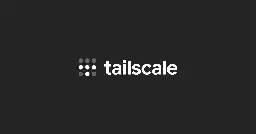
TIL about 100.x.x.x addresses, was using tailscale for some time, but was not aware that they are from specific range.
- Resend
Mail sending relay, has a free tier, good for small self-hosted services, mailgun and similar alternative
- Two-Phase Commit (2PC) for data consistency in microservices
Found it useful overview of 2PC
- MySQL Key Performance Indicators (KPI) With PMMwww.percona.com MySQL Key Performance Indicators (KPI) With PMM
Enhance your database's efficiency by tracking and optimizing MySQL key performance indicators (KPIs) with PMM.
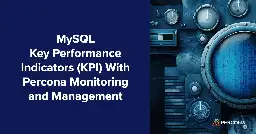
- Dark Side of DevOpswww.infoq.com Dark Side of DevOps
Mykyta Protsenko discusses the trade-offs that companies face during the process of shifting left, how to ease cognitive load for the developers, and how to keep up with the evolving practices.

Something to think about
- Jeff Geerling stops development for Redhat

YouTube Video
Click to view this content.
cross-posted from: https://feddit.uk/post/225052
> An exceptionally well explained rant that I find myself in total agreement with.
- Build Your Own Docker with Linux Namespaces, cgroups, and chroot: Hands-on Guideakashrajpurohit.com Build Your Own Docker with Linux Namespaces, cgroups, and chroot: Hands-on Guide
Take a practical approach to containerization as we guide you through the step-by-step process of building your own Docker-like environment using Linux namespaces, cgroups, and chroot. Dive into the code and command examples to gain a deeper understanding of how these technologies work together to c...
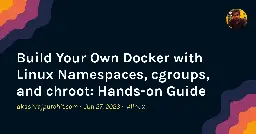
- Patcher, a Tool to Keep Updating Infrastructure as a Codewww.infoq.com Patcher, a Tool to Keep Updating Infrastructure as a Code
Gruntwork announces the beta availability of Patcher, a tool to automatically keep updating the infrastructure as a code, even with breaking changes.

- How to use Borgmatic to backup PostgreSQL in Kubernetesavys.group.lt How to use Borgmatic to backup PostgreSQL in Kubernetes
There are many goodies in the internets, but not much good documentation so that usage of them would be frictionless. Here is a short writeup on backuping up Mastodon instance database, runn...

Rather simple backup of PostgreSQL database to remote Borg repository in Kubernetes (Example using Mastodon instance)
- Uptrace v1.5: a self-hosted DataDog/NewRelic alternativegithub.com GitHub - uptrace/uptrace: Open source APM: OpenTelemetry traces, metrics, and logs
Open source APM: OpenTelemetry traces, metrics, and logs - GitHub - uptrace/uptrace: Open source APM: OpenTelemetry traces, metrics, and logs

cross-posted from: https://lemmy.world/post/182705
> Uptrace is an OpenTelemetry APM tool that supports distributed tracing, metrics, and logs. You can use it to monitor applications and set up automatic alerts to receive notifications via email, Slack, Telegram, and more. > > In this release, we improved spans filtering, metrics dashboards, added AWS CloudWatch integration, restored an ability to use Uptrace as Grafana datasource, and more.
- Network Protocols Run the Internetblog.bytebytego.com Network Protocols Run the Internet
In distributed systems, data is sent over the network using various network protocols. As an application developer, this often seems like a block box until an issue arises. In this issue, we’ll explain how common network protocols work, where they are used in distributed systems, and how we troubles...
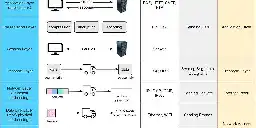
- Registration for @eurobsdcon 2023 is open.mastodon.social Peter N. M. Hansteen (@pitrh@mastodon.social)
Registration for @eurobsdcon 2023 is open. Check out the program at https://2023.eurobsdcon.org/program/, then go to https://registration.eurobsdcon.org/ and register. Early bird rates apply before July 15th, 2023. Go register! See you in #Coimbra, #Portugal September 14-17, 2023! #eurobsd...
#Coimbra, #Portugal September 14-17, 2023
- Ready-to-Use High Availability Architectures for MySQL and PostgreSQLwww.percona.com Ready-to-Use High Availability Architectures for MySQL and PostgreSQL
Percona high availability architectures for MySQL and PostgreSQL are proven to keep operations running optimally, even during peak usage or technical challenges.
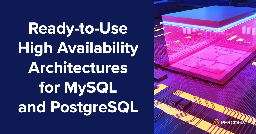
HA is always handy, when it is working :)
- Around the world: How Wikipedia became a multi-datacenter deployment – [[WM:TECHBLOG]]
Multi-datacenter deployments are not easy, here are some insights from Wikipedia team. That Wikipedia traffic is mostly reads (as opposed to write heavy system) is also helping.
- Precision & Recallwww.simoncross.com Precision & Recall
Two fundamental product concepts that, once you know, you'll see everywhere
Got me thinking about monitoring alerts
- A short tutorial on strace
Nice intro into strace and similar tools
- This web UI for Ansible is so damn useful!

YouTube Video
Click to view this content.
Looks interesting
- How can you land 5 kilometers above the Moon?flyingbarron.medium.com How can you land 5 kilometers above the Moon?
The near success and crash of HAKUTO-R Mission 1

assume - ass u me
- Deploy your own VPN servergithub.com GitHub - amnezia-vpn/amnezia-client: Amnezia VPN Client (Desktop+Mobile)
Amnezia VPN Client (Desktop+Mobile). Contribute to amnezia-vpn/amnezia-client development by creating an account on GitHub.
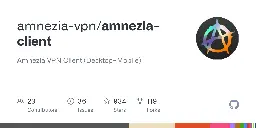
Automatically setup a VPN on your own virtual server
- Disaster Recovery for PostgreSQL on Kuberneteswww.percona.com Disaster Recovery for PostgreSQL on Kubernetes
Percona Operators provide a solution to streamline disaster recovery for PostgreSQL clusters running on Kubernetes.
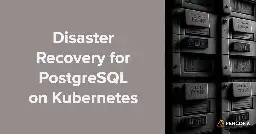
Seems like sound principles and suggestions
- More Memory, More Problems
The single Postgres setting that almost took down our database
- GitHub - 89luca89/distrobox: Use any linux distribution inside your terminal. Enable both backward and forward compatibility with software and freedom to use whatever distribution you’re more comfortagithub.com GitHub - 89luca89/distrobox: Use any linux distribution inside your terminal. Enable both backward and forward compatibility with software and freedom to use whatever distribution you’re more comfortable with. Mirror available at: https://gitlab.com/89luca89/distrobox
Use any linux distribution inside your terminal. Enable both backward and forward compatibility with software and freedom to use whatever distribution you’re more comfortable with. Mirror available...
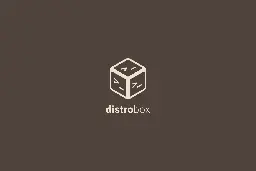
About Use any linux distribution inside your terminal. Enable both backward and forward compatibility with software and freedom to use whatever distribution you’re more comfortable with. Mirror available at:
- Is there such a thing as a system that’s too reliable?flyingbarron.medium.com Is there such a thing as a system that’s too reliable?
NASA’s Voyager Will Do More Science With New Power Strategy

About tradeoffs
- New talk: Learning DNS in 10 years
By Julia Evans. Nice walkthrough on learning and troubleshooting, using DNS as example.
- AWS Updates the Well-Architected Frameworkwww.infoq.com AWS Updates the Well-Architected Framework
AWS recently released an update to the Well-Architected Framework. The new version strengthens prescriptive guidance with over 100 best practices updated across all six pillars of the framework.

Even if you are not using AWS - there is a ton of info to learn from.
- Load Balancing
Excellent article on http load balancing by @samwho@hachyderm.io
- Five Koans of Software Architecture
Some food for thinking
- Reflections on 10,000 Hours of DevOpsblog.matt-rickard.com Reflections on 10,000 Hours of DevOps
Some reflections after putting 10,000 hours into DevOps engineering. From my early adolescence doing sysadmin work, customizing my Arch Linux installation, to running a server in the closet of my college dorm (narrator: it was loud, and my email rarely delivered), to working on open-source DevOps at...

Something to think about
- Master the Art of Caching for System Design Interviews: A Complete Guide
Good article on understanding caching
- On OpenAI's Kubernetes Cluster
Interesting observations on how OpenAI uses Kubernetes
- DevOps in Shorts
Atsibodo virtualios IT konferencijos? Mums taip pat. Todėl jau ši balandį norime Tave pakviesti į jau antrą kartą vyksiantį DevOps forumą "DevOps in Shorts".
- Inside Uber’s move to the Cloud: Part 1newsletter.pragmaticengineer.com Inside Uber’s move to the Cloud: Part 1
Uber has operated its own data centers for 9 years. What challenges did the company face, and why is it considering moving to the Cloud? Part 1.

Interesting info on how Uber operates it's infrastructure.
- How to Test Your Fault Isolation Boundaries in the Cloudwww.infoq.com How to Test Your Fault Isolation Boundaries in the Cloud
Jason Barto discusses fault isolation boundaries and ways to take advantage of fault isolation in AWS, demonstrating initial tests used to ensure a system has successfully isolated faults.

There is no such system that will not fail, so the question - how?
Talks about failure domains, fault isolation and testing it (using chaos engineering)
- Low Latency: The High-Speed Adventure in Distributed Systems
How to think about these systems
- Bad Observability - SquaredUpsquaredup.com Bad Observability - SquaredUp
There's plenty of content out there telling you how to implement observability, or what good looks like. But what about bad observability?

Actually quite good insights
- Foundational DevOps Patterns
cross-posted from !softwareengineering@group.lt: https://group.lt/post/46385
> Adopting DevOps practices is nowadays a recurring task in the industry. DevOps is a set of practices intended to reduce the friction between the software development (Dev) and the IT operations (Ops), resulting in higher quality software and a shorter development lifecycle. Even though many resources are talking about DevOps practices, they are often inconsistent with each other on the best DevOps practices. Furthermore, they lack the needed detail and structure for beginners to the DevOps field to quickly understand them. > > In order to tackle this issue, this paper proposes four foundational DevOps patterns: Version Control Everything, Continuous Integration, Deployment Automation, and Monitoring. The patterns are both detailed enough and structured to be easily reused by practitioners and flexible enough to accommodate different needs and quirks that might arise from their actual usage context. Furthermore, the patterns are tuned to the DevOps principle of Continuous Improvement by containing metrics so that practitioners can improve their pattern implementations.
---
The article does not describes but actually identified and included 2 other patterns in addition to the four above (so actually 6):
- Cloud Infrastructure, which includes cloud computing, scaling, infrastructure as a code, ...
- Pipeline, "important for implementing Deployment Automation and Continuous Integration, and segregating it from the others allows us to make the solutions of these patterns easier to use, namely in contexts where a pipeline does not need to be present."
!Overview of the pattern candidates and their relation
The paper is interesting for the following structure in describing the patterns:
> - Name: An evocative name for the pattern. > - Context: Contains the context for the pattern providing a background for the problem. > - Problem: A question representing the problem that the pattern intends to solve. > - Forces: A list of forces that the solution must balance out. > - Solution: A detailed description of the solution for our pattern’s problem. > - Consequences: The implications, advantages and trade-offs caused by using the pattern. > - Related Patterns: Patterns which are connected somehow to the one being described. > - Metrics: A set of metrics to measure the effectiveness of the pattern’s solution implementation.
- How Cloudflare uses Terraform to manage Cloudflareblog.cloudflare.com How Cloudflare uses Terraform to manage Cloudflare
Cloudflare uses the Cloudflare Terraform provider extensively to make changes to our internal accounts as easy as opening a pull request.

Some Terraform practices
